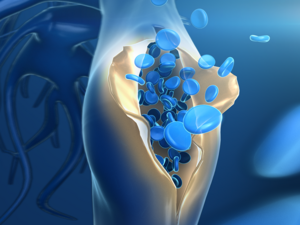Specialists in Aortic Dissection
5 Specialists found
Information About the Field of Aortic Dissection
Definition: What Is Aortic Dissection?

Aortic dissection is a life-threatening condition because it can lead to rupture of the aorta and acute circulation disorder to organs. Men are ten times more likely to be affected than women. It is a splitting of the vessel wall layers. About half of aortic dissections lead to death within 48 hours if left untreated. The affected person experiences sudden, severe pain.
Blood vessels are responsible for transporting blood through our bodies. A distinction is made between blood vessels that lead away from the heart (arteries) and blood vessels that lead to the heart (veins). The aorta, also called the main artery, is the largest artery in the human body. Oxygen-rich blood enters the aorta from the left ventricle. The aorta first runs toward the head, bends over the heart to the left side of the body, and then pulls down through the chest and abdomen to the left in front of the spine. From the aorta, blood is directed into the smaller, branching arteries. All blood must pass through the aorta before it can supply the head, arms, and legs.
Causes: How Does Aortic Dissection Occur?
Blood vessels comprise three wall layers: Intima, media, and adventitia (from inside to outside). If the innermost (intima) ruptures, blood can flow into the resulting cavity between the intima and media. The blood pressure presses the blood between the two vascular layers through this opening. As a result, the hole continues to expand in the longitudinal direction of the vessel. The hole size created in an aortic dissection can vary from a few millimeters to several centimeters.
A distinction between type A and type B is made in aortic dissection. This classification describes the localization of the tear in the vessel wall. Type A is splitting the vessel wall around the ascending aorta and the aortic arch with or without extension into the descending aorta. Type B is the splitting around the descending aorta into the thoracic region or further. This distinction is essential in therapy.
The most common factors leading to aortic dissection are hypertension, atherosclerosis, and congenital connective tissue disease. Atherosclerosis is the most common form of damage to the blood vessels. It is also known colloquially as the hardening of the arteries. It is caused by an inflammatory reaction of the vessel wall. Many factors play a role in the development of atherosclerosis. Risk factors include high blood pressure, nicotine consumption, diabetes, lack of exercise, or a disorder of lipometabolism. On average, men are affected by atherosclerosis earlier. Overall, it increases with age.
Congenital connective tissue diseases such as Ehlers-Danlos syndrome or Marfan syndrome are also risk factors for the development of aortic dissection. In these diseases, the connective tissue is built up incorrectly, and all connective tissues in the body instability occur. This then also affects the stability of the vessels.
Inflammation of the aorta also promotes aortic dissection. These conditions can have infectious or autoimmune causes. Drug abuse, typically amphetamine use, can trigger an aortic dissection, especially in younger patients.
Symptoms: What Are Signs of Aortic Dissection?
Affected individuals experience a sudden onset of very severe pain. It is often described as tearing or cutting. Depending on which part of the aorta the dissection occurs, the pain is localized. It may appear behind the breastbone, between the shoulder blades, and on the back, spreading to the abdomen. The pain may migrate as the dissection progresses.
In addition to pain, other symptoms may occur because of aortic dissection. Occlusion and narrowing of vessels branching off the aorta are possible. Obstructing the cerebral vessels branching off the aortic arch can cause speech disorders, hemiplegia, and unconsciousness.
If the dissection cuts off the blood supply to the spinal cord, paraplegia occurs. There may be a pain in the abdomen if the arteries supplying the intestines or kidneys are blocked. Arms and legs may also be affected by circulatory problems.
Diagnosis: How Can Aortic Dissection Be Detected?
The patient's symptoms are crucial for the diagnosis of an aortic dissection. Any sudden chest, back, or abdomen pain must make the physician think of an aortic dissection. In addition, a difference in blood pressure between the two arms, a heart murmur, or the symptomatology of a circulatory problem may give a clue to the disease. An elevated D-dimer level can be detected in the laboratory in almost all cases if blood is drawn.
If aortic dissection is suspected, various imaging modalities may be used. Transesophageal echocardiography is an ultrasound examination of the heart in which the ultrasound probe is inserted through the esophagus. The effectiveness of this examination is highly dependent on the skill and experience of the physician. Ultrasound, contrast-enhanced computed tomography (CT), and magnetic resonance imaging (MRI) are other ways to image and diagnose diseases.
Therapy: How Is Aortic Dissection Treated?
Drug therapy consists of blood pressure-lowering and pain management.
Type A aortic dissections are emergencies and should be treated surgically as soon as possible. The affected portion of the aorta is replaced with a plastic prosthesis during surgery.
In type B, surgical treatment is necessary only if complications are imminent. If that is the case, endovascular repair is also an option for type B. This means the vessel is repaired inside (e.g., with vascular prostheses or stents).
Which Doctors and Specialists are Responsible for the Diagnosis and Treatment of Aortic Dissection?
If aortic dissection is suspected, transport to a heart and vascular center accompanied by an emergency physician should be made immediately. Due to time pressure, diagnostic workup in the hospital must be limited to confirming the diagnosis of aortic dissection. Specialists carry out the surgical treatment in vascular surgery.
Sources:
Journal of Vascular Medicine 2008; www.aerzteblatt.de ; Dual Series, Internal Medicine; Herold, Internal Medicine 2016; Harrison, Internal Medicine.




